Missouri River Breaks Bighorn Sheep Hunt - Lessons Learned
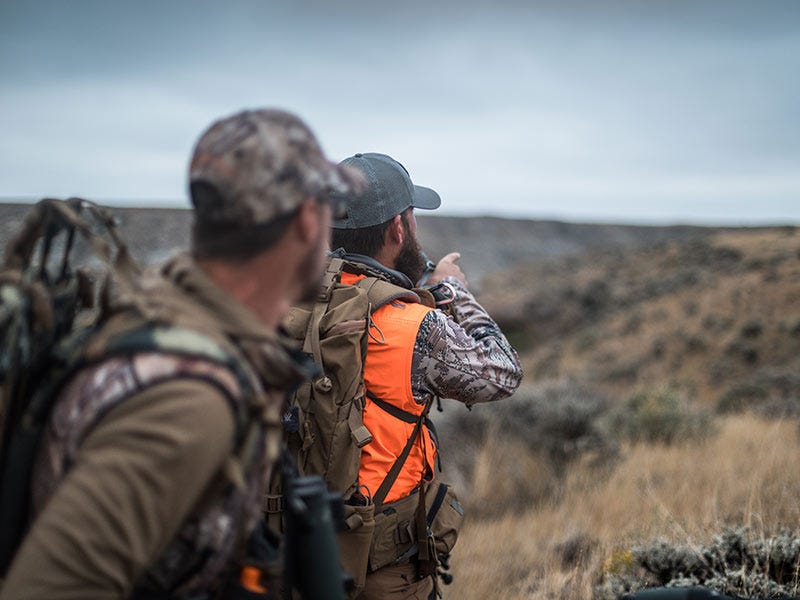
Montana is an exceptional place to hunt big game. Residents are spoiled with low tag prices, ample species to pursue with over the counter (OTC) tags, millions of acres of public land, and seasons that last for months. It’s also home to special draws for moose, sheep, goat, bison, elk, antelope, and more.
On the top of that list, and arguably at the top of the list in the world, is the bighorn sheep. Most notably, the Missouri River Breaks, “The Breaks” bighorn sheep tag. It’s a tag so coveted that it once went for nearly a half million dollars at auction and consistently sells every year for hundreds of thousands of dollars. In 2018, I drew this permit…
Before you head out - Find out what our favorite Top 5 Bows from ATA are.
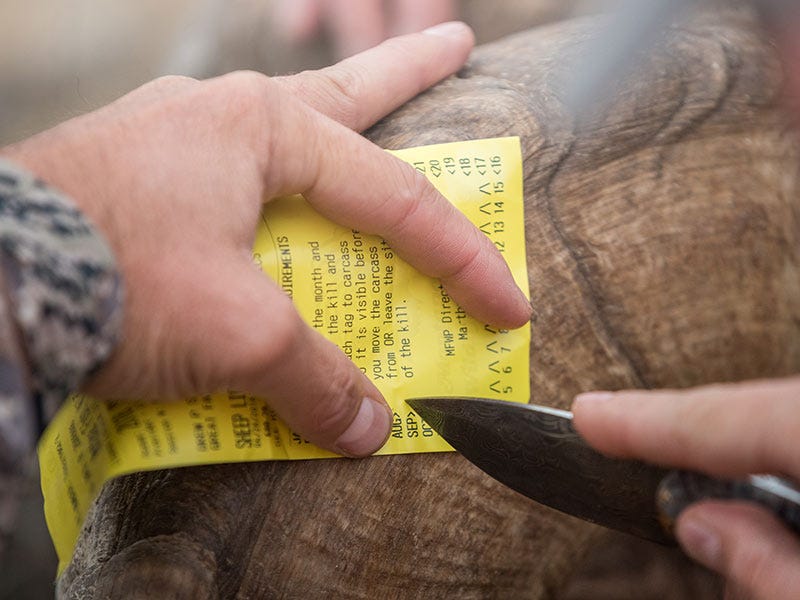 Photo by Jerrin Uecker
Photo by Jerrin UeckerLesson 1 - How to Draw a Tag for Bighorn Sheep
If you’re someone who applies for tags out west, you probably know about the Breaks sheep tag and you probably agree that it is somewhere around the top of anyone’s list to draw. You probably also realize how difficult it is to draw this tag, so it’s not shocking that my expectations of drawing were so low that I had put absolutely no research into this species or area. I figured, if I wasn’t in the running to draw for another 10 – 20 years, why bother. I’m here to warn you that you can draw and you should start preparing now, even if the odds are stacked against you.
Applying for a tag (tag, aka permit, license, special draw) is a simple, but important, process if you want to hunt more regulated species like Big Horn Sheep. Early spring is application season in Montana, which is quite arguably more important than remembering your significant other’s birthday. You can find out how to draw in Montana by visiting your local Fish, Wildlife and Parks office or by going to fwp.mt.gov.
Side note #1 – don’t forget your significant other’s birthday. If you do accidentally draw a coveted tag, you’ll need a full “cookie jar” if you expect to be gone a lot in the fall. Cookie Jar – The imaginary jar that one fills with good deeds. A full jar is optimal for a hunter who plans to use up many favors, or cookies, from said jar.
Lesson 2 - Learn the Lay of the Land
Have you ever crossed Stafford Ferry on the Missouri River? Me either… This portion of the Breaks is known as the Upper Missouri River Breaks. Until you’ve been here it’s hard to comprehend or describe. The landscape seems barren and uninhabitable at first glance. The hills in the Breaks are steep (in some places nearly 700 feet) and unforgiving. The gumbo hills are near impassable when wet and the weather can scorch your body dry one day and freeze you to death the next. What looks like moonscape is the perfect habitat for nimble bighorn sheep. This drastic contrast in geography is what gives the Breaks its identity.
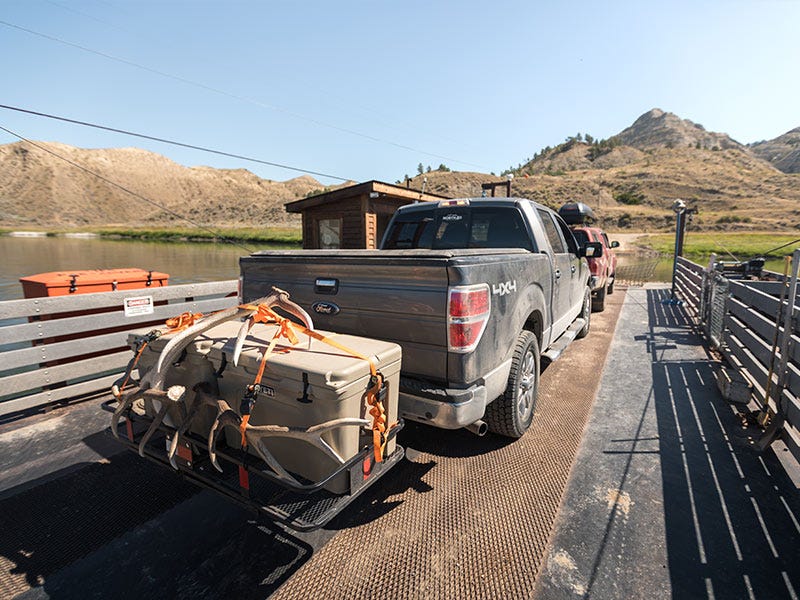 Photo by Jerrin Uecker
Photo by Jerrin UeckerIf I could go back in time and give myself one piece of advice, it would be to visit this area more often. Knowing the landscape prior to drawing would have really helped my knowledge and overall comfort level on this hunt.
Side note #2– All of the myths about gumbo are true. The morning I left my camp it was misting, and we had a tough time making it a couple of hundred yards from our established campground to the county (gravel) road. Gumbo – Is not your everyday mud. Breaks gumbo is a special mix of slippery and sticky. It’s been known to trap folks for weeks and swallow vehicles whole. You’ve been warned…
 Photo by Jerrin Uecker
Photo by Jerrin UeckerLesson 3 – Navigation is Key
Another point to note is the accessibility of where you are going. This usually points towards a physical barrier like a big mountain range, but in the case of the Breaks it means physical access to where the sheep are. The Upper Missouri River Breaks National Monument is over 350,000 acres, but access to where the sheep are isn’t as simple as you’d think. Much of the prime sheep habitat is tricky to get into and physically demanding. The lack of water (springs, streams, ponds) in the Breaks makes long hikes difficult due to the amount of water a person needs to pack with them.
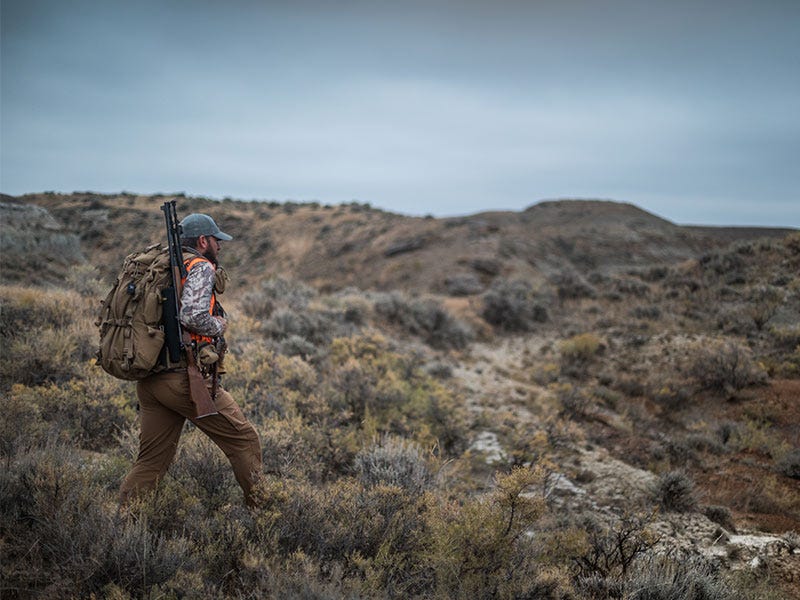 Photo by Jerrin Uecker
Photo by Jerrin UeckerJet boats are a popular way to access these sheep, but this wild and scenic stretch of Missouri River can be tough to read. Many a jet boater has spent a long night beached on a sand bar they didn’t see until they ran their boat on to it. Bottom line, if you’re not good at navigating around difficult public access and don’t want to pay a trespass fee, you may want to consider applying to a different district.
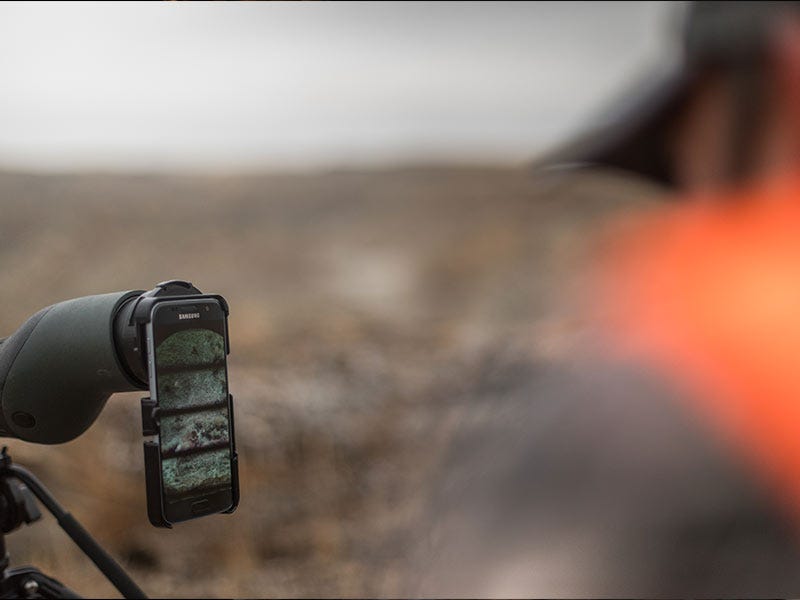 Photo by Jerrin Uecker
Photo by Jerrin UeckerUltimately, getting to the area that held the sheep I killed was no easy task. We had accessed a small piece of BLM that would lead us into two large public land areas that held a lot of sheep. This is where preparation and doing some homework really paid off. Before going into this area, I was told the road I was looking at on the map wasn’t a county road -even though the road was clearly marked and named on OnX maps, Montana Cadastral maps, and my good old-fashioned atlas. Also, the FWP and BLM managers I spoke with couldn’t answer if the road was or wasn’t public either. So, I ended up contacting the county commissioner. After a good conversation with them, I found out my desired road was indeed public, but not as far as it showed on the map. This was game-changing information to have!
Need the best in navigation when it counts? Check out GPS here.
 Photo by Jerrin Uecker
Photo by Jerrin UeckerLesson 4 – Setting Expectations
Often with a special bighorn sheep draw comes high expectations. High trophy potential mixed with unrealistic expectations, can lead to a less than desirable bighorn sheep hunting experience. It doesn’t help that the Breaks has had a few of the largest hunter-harvested rams ever killed in the world harvested in the past decade. If you’re not careful, it’ll feel as though the bar is set before you even start your hunt.
Wanting to shoot a big ram isn’t a bad thing but know that even the best areas in the world don’t hold trophy animals around every piece of sagebrush. I was lucky enough to have a really good group of guys with me on my trip. They helped keep me grounded, realistic, and really made this hunt fun. Records and score aside, when the season is over you’ll be left with the memories of the hunt and hopefully a new love of how good sheep meat is! Whatever your motivation or goals are, stick to them and you’ll probably have the Missouri River Breaks bighorn sheep hunt of a lifetime. If you get worked up about what other people expect, you’ll probably leave the Breaks with regrets.
Lesson 5 – Who Should you Take with you on a Bighorn Sheep Hunt?
My hunt for the famed Missouri River Breaks bighorn sheep was accomplished on trip #3. I had planned to go as much as possible, but lady luck was on my side for the draw and for the hunt. The first two hunts were a good warm-up for the rifle opener. I was able to stretch my legs, navigate a lot of country and look at some sheep up close with a weapon in hand. It also made me a bit nervous for the rifle season. After five days of hiking, glassing, and jet boating we had yet to turn up a mature ram, but the season was young, and I had an eight-day trip planned for the rifle opener.
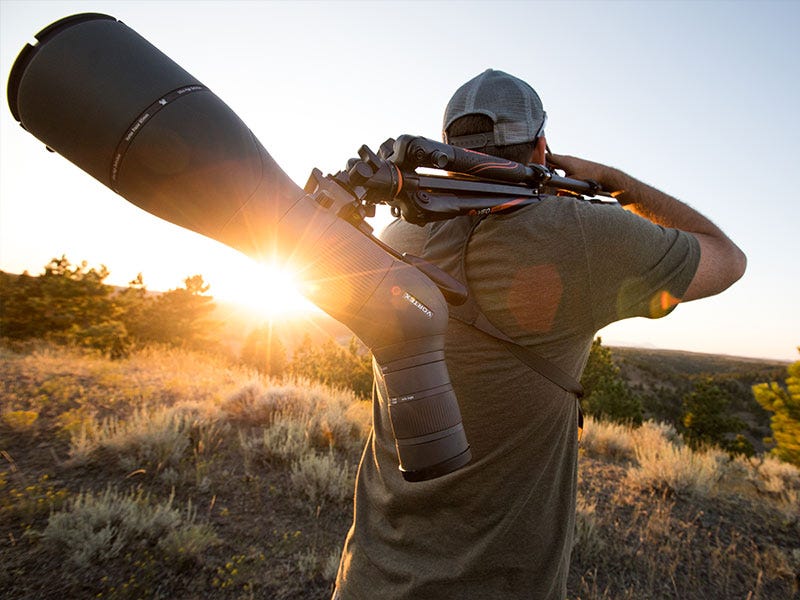 Photo by Jerrin Uecker
Photo by Jerrin UeckerOn day 6, September 14th, the day before the bighorn sheep rifle opener, we found a ram that looked like, the one. He was in a band of smaller rams and stood out like a sore thumb among the other three and four-year-old sheep. Eyes fixed to our spotting scopes, we watched this band of rams at 365 yards for over five hours.
In times like these, having great optics matters. Order online here.
 Photo by Jerrin Uecker
Photo by Jerrin UeckerI had two friends along who had experience with bighorn sheep hunting. However, only one of those two had ever killed a sheep. We talked a lot about mass, length, overlay, how well he carried his mass, full curl, three-quarter curl, etc… This was good information, but all I actually wanted was someone to tell me that this was a no brainer and that I needed to shoot this ram. Alas, this group was not going to do that. Back to our expectation’s discussion – these guys knew I had to make that decision on my own and were awesome about leaving that decision solely on my shoulders.
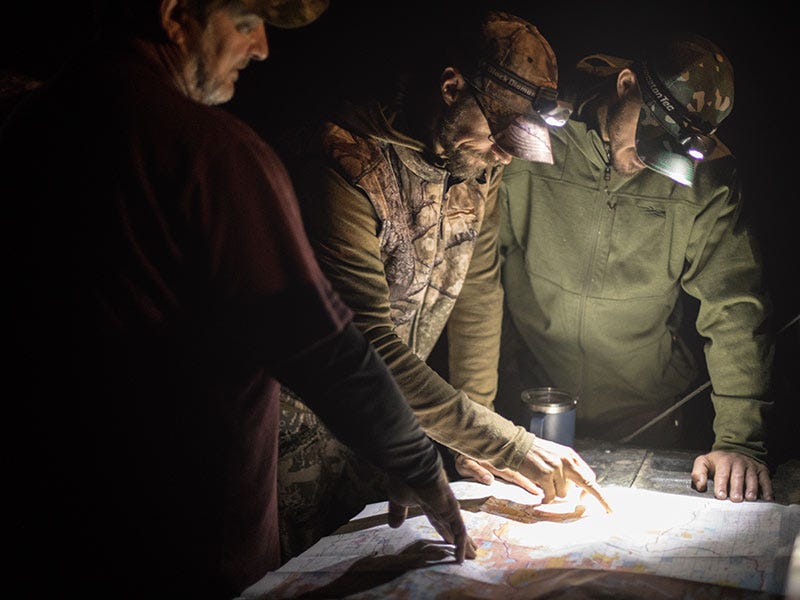 Photo by Jerrin Uecker
Photo by Jerrin UeckerLesson 6 – Behind the Scope
After watching the ram all afternoon, we made a game plan for the next morning. At first light, we found our guy, but he was feeding near the edge of a BLM section. After making our stalk, we were within 150 yards of our ram. Bi-pod down, and everyone in place, we looked him over one last time.
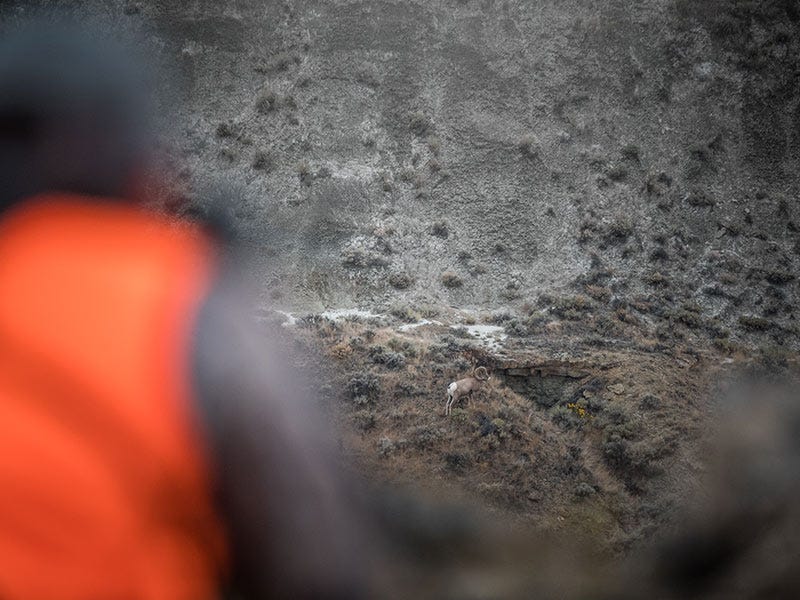 Photo by Jerrin Uecker
Photo by Jerrin UeckerMaking the decision to pull the trigger with the Missouri River Breaks bighorn sheep tag of a lifetime proved to be more difficult than I had expected it to be. Behind the scope, the ram looked amazing. Here I was in the middle of the Breaks, with some of my best friends on a beautiful day, with a mature sheep in my crosshairs. My patient hunting partners watched as I lay prone doing nothing. Looking back, I’m not sure why I hesitated to pull the trigger right away. Was he big enough? Am I doing this tag justice? Is it too soon because it was opening day and I didn’t want the hunt to end? Ultimately, I made the decision to pull the trigger that morning and as quickly as the hunt started, it ended.
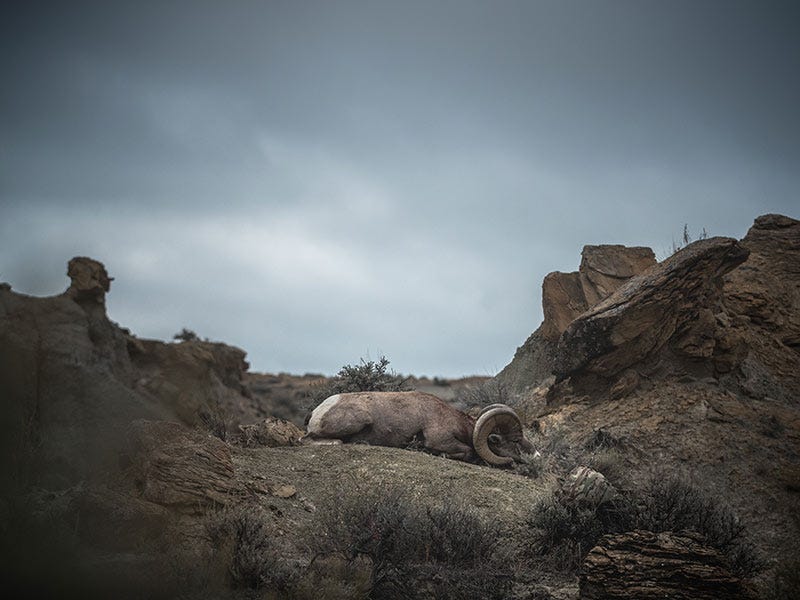 Photo by Jerrin Uecker
Photo by Jerrin Uecker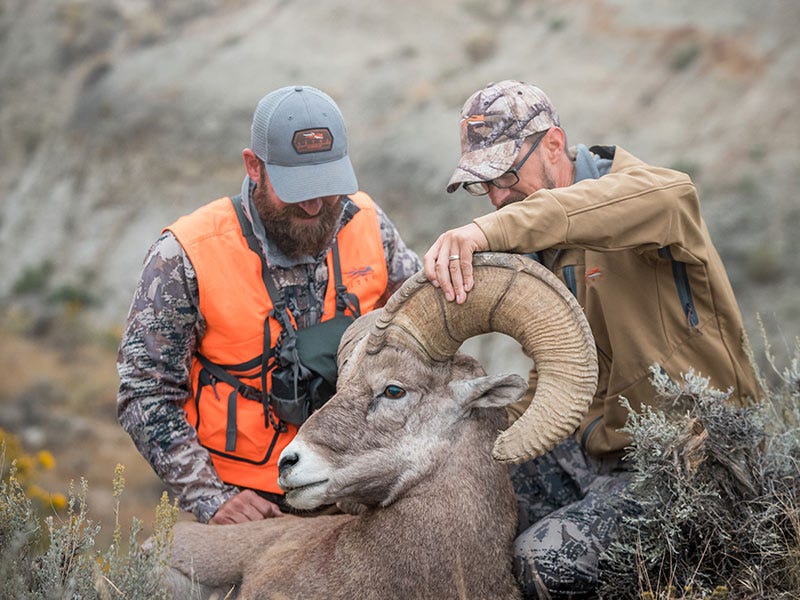 Photo by Jerrin Uecker
Photo by Jerrin UeckerLesson Learned – What If
Before you apply for your next “dream tag,” take a minute to think more about what you could be getting yourself into. What if you draw? Will you be ready? What do you want your experience to be? I learned through my experience that drawing the Missouri River Breaks bighorn sheep tag was the easy part and that the details of the hunt were way more complex than I had ever imagined. For me, the lesson learned was that I had an experience of a lifetime. Others hunting bighorn sheep, have not been so lucky.
Want to read a little more? Browse all our hunt stories here.
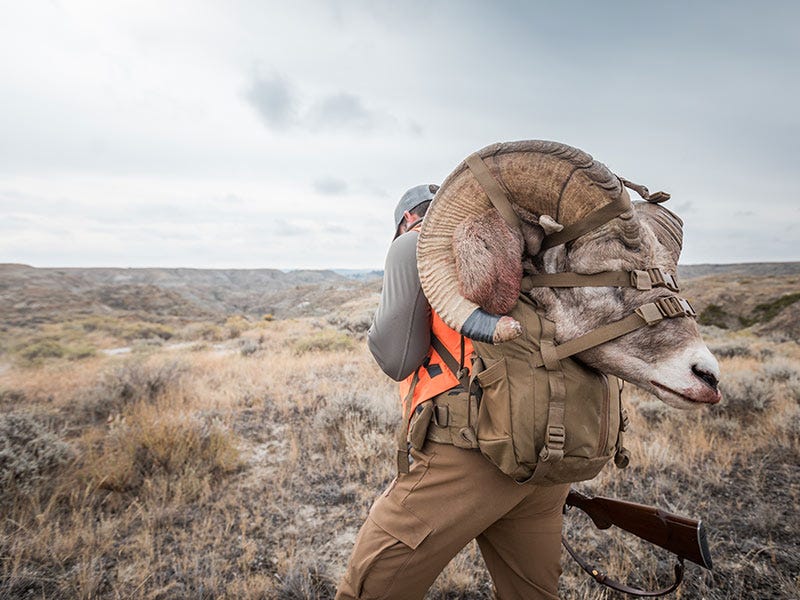 Photo by Jerrin Uecker
Photo by Jerrin Uecker